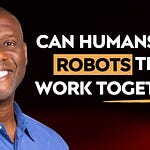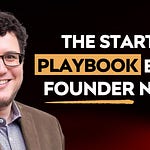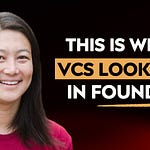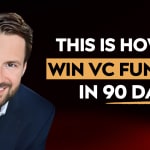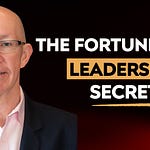When we think of world-changing innovations—biotech breakthroughs, AI models, clean energy technologies—they often begin in a lab. Yet, many never make it to the marketplace. The reason isn’t lack of brilliance; it’s the lack of clear pathways for funding, partnerships, and commercialization.
This is the challenge Rupak Doshi, co-founder and CEO of OmniSync, set out to solve. A scientist-turned-entrepreneur with a PhD from Cambridge and research stints at Scripps Research and UCSD, Rupak knows firsthand how many promising ideas get stuck in academic or startup limbo. Through OmniSync’s flagship platform TurboInnovate, his team is creating an AI-driven solution to help innovators take ideas from bench to market faster.
The Journey from Academia to Entrepreneurship
Rupak’s career began in India with a love for biology and a brief attempt at medicine before pivoting to biotechnology. His academic path took him to the UK for a master’s degree and PhD, and then to the U.S. for postdoctoral work in San Diego.
But while working in biotech drug development, he noticed a persistent gap: early partnerships often determined whether a therapy advanced to clinical trials. Many groundbreaking ideas stalled simply because their creators didn’t know how to find funding or the right collaborators. That realization sparked the birth of OmniSync.
Building OmniSync and TurboInnovate
OmniSync began with a bold mission: help deep tech ideas cross the chasm from labs to real-world markets. Unlike startups built around a single feature or narrow use case, OmniSync was designed as a platform to tackle multiple barriers along the innovation pipeline.
The company’s flagship product, TurboInnovate, combines AI with industry-specific insights to:
Map commercialization pathways for new ideas
Identify white space opportunities in the market
Connect innovators with potential partners and investors
Automate grant discovery and proposal writing
Streamline the R&D pipeline for corporations, universities, and startups
Think of it as a “CRM for innovation”—a system of record for managing ideas, funding, partnerships, and commercialization, all in one place.
A New Approach to Hiring and Culture
One of the more unconventional aspects of OmniSync is its approach to team building. Rupak and his co-founder don’t hire based on résumés. Instead, they look for signals of drive and hustle—cold outreach, speed in completing tasks, and willingness to adapt.
This flexible hiring model allowed OmniSync to build a dynamic, mission-driven team early on, with employees moving fluidly between roles as the company evolved. It’s a reflection of the startup’s own philosophy: progress comes from initiative and experimentation, not rigid structures.
Lessons Learned: Academia vs. Entrepreneurship
Rupak shared candid reflections on the stark differences between academia and entrepreneurship. In academia, researchers are encouraged to publish for the sake of novelty, even if the results aren’t reproducible or useful. In business, however, results must work—reliably, objectively, and better than alternatives.
This demand for tangible outcomes reshaped his mindset. Entrepreneurship, he notes, is about solving real problems, not just intellectually stimulating ones.
OmniSync’s Cap Table and Go-to-Market Strategy
OmniSync’s customer base—and investor base—reflects the interconnected world of innovation. Their clients include startups, Fortune 1000 companies, universities, and government agencies. Their investors represent the same sectors.
Interestingly, while many startups see events and conferences as low ROI, Rupak finds them essential. For deep tech, where progress depends on cross-sector collaboration, these gatherings are where the right connections are made.
What’s Next for TurboInnovate
Looking ahead, OmniSync is moving beyond commercialization pathways to provide feedback loops that refine innovations themselves. By analyzing market and scientific signals, the platform will soon suggest product modifications to improve success rates—essentially serving as an autonomous engine that evolves ideas toward market readiness.
Rupak predicts that within a year, AI will be able to shepherd ideas from research to commercialization with minimal human intervention. In his words, the future will be one where “anyone can build anything.”
Key Takeaways for Innovators
Funding is plural. Rarely does a single source sustain early-stage deep tech startups. Explore non-dilutive grants, strategic partnerships, and venture capital in parallel.
Hire for hustle, not just skills. A resume doesn’t always reflect someone’s drive to push through the unknowns of startup life.
Academia and business operate on different incentives. If you’re moving from lab to market, embrace the shift from “interesting” to “useful.”
Conferences can still matter. Especially in deep tech, the best connections often happen in person.
The future is fast. With AI accelerating research and commercialization, timelines that once took decades may now take years—or less.
Final Thoughts
Rupak Doshi’s story is a reminder that innovation isn’t just about science; it’s about building systems that give ideas a chance to thrive. Through OmniSync and TurboInnovate, he’s working to democratize access to funding, partnerships, and markets—ensuring more breakthroughs see the light of day.
For anyone with a bold idea sitting on the shelf, this is a glimpse into a future where commercialization may be as streamlined as filing your taxes—only with a much bigger impact.
👂🎧 Watch, listen, and follow on your favorite platform: https://tr.ee/S2ayrbx_fL
🙏 Join the conversation on your favorite social network: https://linktr.ee/theignitepodcast
Chapters:
00:01 – Introduction to Rupak and OmniSync’s mission
00:52 – Growing up in India, early love for biology, and pivot to biotech
02:00 – Research journey: UK master’s and PhD at Cambridge, postdoc in San Diego
03:07 – Moving into biotech industry and the importance of partnerships
04:30 – Founding OmniSync and the aha moment that shaped their mission
06:19 – Building company culture: hiring for drive, not resumes
08:01 – Signals of hustle and how OmniSync identifies talent
12:51 – Biggest lessons transitioning from academia to entrepreneurship
16:16 – The origin and evolution of TurboInnovate
20:28 – End-to-end user journey for startups on the platform
22:26 – Customers: universities, startups, Fortune 1000, and government
24:09 – Defining a new category of innovation intelligence
25:10 – Personal story: tattoo, family, and passions outside of work
26:24 – Competing in a crowded “AI for research” market
29:27 – OmniSync’s diverse cap table: blending venture, government, and academia
31:21 – Go-to-market: why conferences are OmniSync’s highest-ROI strategy
34:01 – A hard pivot: moving from human experts to fully automated AI workflows
37:04 – What’s next: building autonomous commercialization feedback loops
42:01 – Looking ahead with AI
44:52 – Transition to rapid fire






